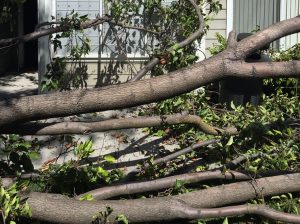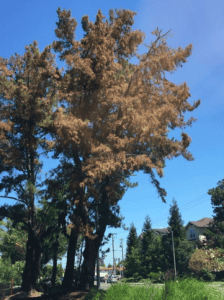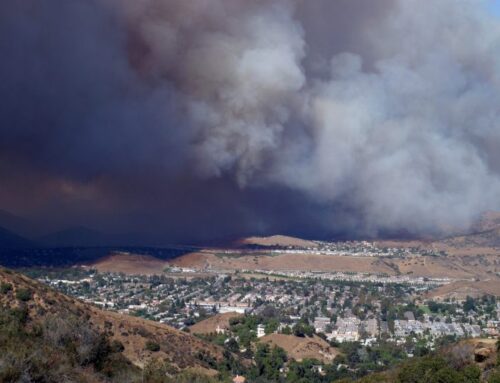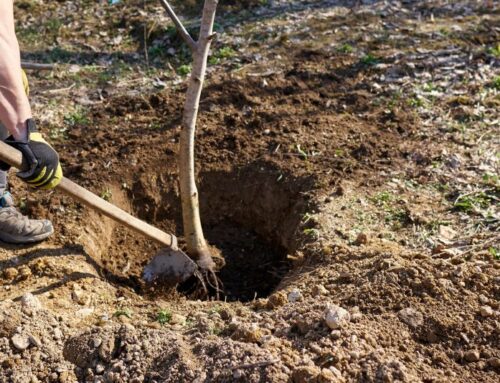It seems like everything is being blamed on the drought lately, but can we blame tree/limb failure on it too? It’s currently being argued within the Arboriculture community, mainly because there isn’t enough data over a long enough period of time to support a correlation.
However, it seems too coincidental that our crews have been called out to more emergencies and our clients are experiencing more limb and tree failures this year than in previous years. Regardless of the science behind it, failures are happening. So, what can be done?
No to Turf, Yes to Mulch
Trees located in turf is always a bad idea. Shallow irrigation over a long period of time leads to a shallow root system, making it much easier for the tree to fall over. Turf also enables soil compaction, which can limit oxygen and suffocate the roots, also causing dieback in the crown.
As the drought condition worsens, water restrictions tighten and you are forced to re-examine your landscape, the best thing to do for your trees is to keep them out of turf, slowly reduce irrigation (you don’t want to shock the tree), and add 3-6” inches of woodchip mulch.

Mitigate with Pruning
There are certain types of tree species that fail more than others because of weaker branch attachments, poor pruning in the past, and/or structural defects.. To name the most common species we’ve see branch failures on, and specific to our client’s properties, are: Sweet Gum, Red Ironbark Eucalyptus, Callery Pear, Willow, Chinese Elm and Monterey Pines.
The best way to mitigate failure hazard is to maintain pruning on these trees. A 3-year pruning cycle is usually sufficient. You can choose to be somewhat aggressive and prune every 2 years on some. Pruning too much at once or too often can actually increase branch failure in the long run. It’s all about making strategic cuts and pruning only what’s necessary.
Water the Trees, not the Lawn
Whether or not drought is the culprit for tree failure, drought stress is definitely affecting the trees. When a tree is experiencing drought stress, they become more vulnerable to pest or disease than a healthy tree. We are seeing pines and birches go from green to brown faster than ever. The best thing to do to combat drought stress and decline in trees is to supplement with deep watering by saturating the soil within the drip line of the trees. During water restrictions, trees should be given a higher priority than lawns.
To conclude, if the tree is already compromised in some way, harsh environmental conditions may exacerbate the issue. While you’re walking your property, always look up and keep an eye out. If anything looks of concern, snap a photo and send it to your A Plus rep right away. We’re just a text away!
For more info on our Drought Mitigation Program. Click here.
In the unfortunate event a failure does occur, call our 24-hr emergency line 866-815-2525.







